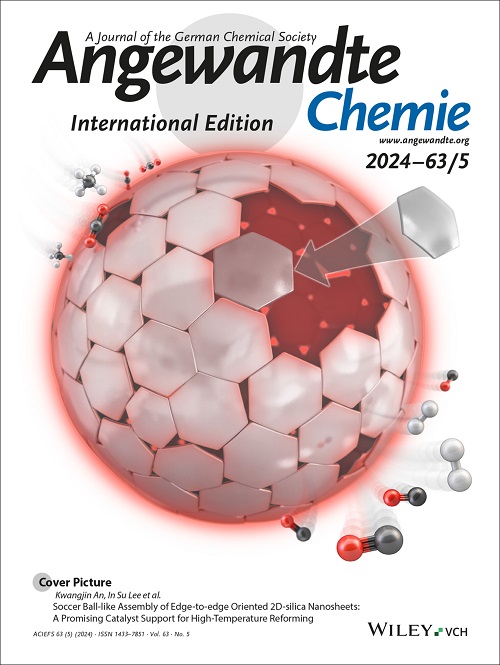Tandem‐Activatable PROTAC Prodrug for Tumor Biomarker‐Driven Near‐Infrared Opto‐Proteolysis
IF 16.1
1区 化学
Q1 CHEMISTRY, MULTIDISCIPLINARY
引用次数: 0
Abstract
Tumor‐specific protein degradation is crucial for successful cancer treatment by proteolysis‐targeting chimera (PROTAC), which however still remains challenging. Here, we report a tandem‐activatable PROTAC prodrug (TAP) strategy for precise on‐tumor proteolysis in vivo. TAP is constructed by caging PROTAC with a tumor‐homing cyclopeptide through a tandem‐locking linker, which comprises a singlet‐oxygen (1O2) cleavable moiety, a near‐infrared (NIR) photosensitizer (PS) and a Cathepsin B (CatB)‐cleavable dipeptide substrate. The proteolytic activity of TAP is initially turned off but can be sequentially switched on by tumor biomarker enzyme CatB and NIR light. Such a tandem‐lock design ensures that PROTAC exclusively degrade oncoprotein target in tumor. The results revealed that TAP carried out a tumor‐selective degradation of bromodomain‐containing protein 4 (BRD4) under the cooperative action by CatB and NIR light, which further synergized with photodynamic therapy (PDT) by the PS to suppress tumor growth. This work thus presents the first tandem‐activatable approach for spatiotemporally controlled proteolysis to minimize the off‐tumor toxicity of PROTAC.串联活化的PROTAC前药用于肿瘤生物标志物驱动的近红外光学蛋白水解
肿瘤特异性蛋白降解对于蛋白水解靶向嵌合体(PROTAC)成功治疗癌症至关重要,但这仍然具有挑战性。在这里,我们报道了一种串联激活的PROTAC前药(TAP)策略,用于体内精确的肿瘤蛋白水解。TAP是通过串联锁定连接体将PROTAC与肿瘤归巢环肽笼化而构建的,该连接体包括单线态氧(1O2)可切割片段、近红外(NIR)光敏剂(PS)和Cathepsin B (CatB)可切割的二肽底物。TAP的蛋白水解活性最初是关闭的,但可以通过肿瘤生物标志物酶CatB和近红外光依次开启。这样的串联锁设计确保了PROTAC在肿瘤中特异性地降解癌蛋白靶点。结果表明,在CatB和近红外光的协同作用下,TAP对含溴结构域蛋白4 (BRD4)进行了肿瘤选择性降解,并进一步与PS的光动力治疗(PDT)协同抑制肿瘤生长。因此,这项工作提出了第一个时空控制蛋白水解的串联激活方法,以最大限度地减少PROTAC的肿瘤外毒性。
本文章由计算机程序翻译,如有差异,请以英文原文为准。
求助全文
约1分钟内获得全文
求助全文
来源期刊
CiteScore
26.60
自引率
6.60%
发文量
3549
审稿时长
1.5 months
期刊介绍:
Angewandte Chemie, a journal of the German Chemical Society (GDCh), maintains a leading position among scholarly journals in general chemistry with an impressive Impact Factor of 16.6 (2022 Journal Citation Reports, Clarivate, 2023). Published weekly in a reader-friendly format, it features new articles almost every day. Established in 1887, Angewandte Chemie is a prominent chemistry journal, offering a dynamic blend of Review-type articles, Highlights, Communications, and Research Articles on a weekly basis, making it unique in the field.

 求助内容:
求助内容: 应助结果提醒方式:
应助结果提醒方式:


